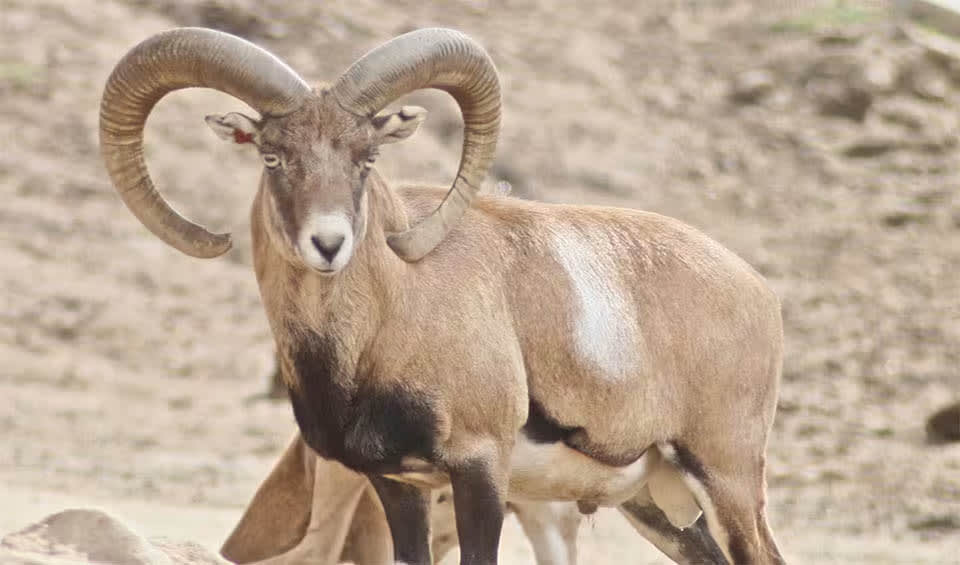A wild sheep native to the mountainous regions of the Middle East, including parts of Turkey, Armenia, and Iran. The mouflon is well adapted to its rugged, rocky habitat, which often includes steep slopes and sparse vegetation. This environment has shaped its physical and behavioral traits, making it a fascinating subject for study.
Mouflons have a sturdy build, which helps them navigate the challenging terrain of their habitat. Their coats change with the seasons: in summer, their fur is short and reddish-brown, while in winter, it becomes thicker and darker to provide better insulation against the cold. One of the most striking features of the mouflon is the impressive curved horns of the males, which can grow up to 85 centimeters in length. These horns are used in combat during the breeding season and are a symbol of strength and dominance.
The mouflon’s habitat is typically rugged and mountainous, which provides natural protection from many predators. However, they still face threats from predators such as wolves, lynxes, and large birds of prey. To avoid these threats, mouflons rely on their keen senses and agility. Their excellent eyesight and hearing allow them to detect danger from a distance, and their ability to run swiftly and navigate rocky terrain helps them escape predators. Mouflons are also known for their ability to blend into their surroundings, which helps them avoid detection.
Distribution
 Armenia
Armenia Azerbaijan
Azerbaijan Cyprus
Cyprus Iran
Iran Turkey
TurkeyAnything we've missed?
Help us improve this page by suggesting edits. Glory never dies!
Suggest an editGet to know me
Terrestrial / Aquatic
Altricial / Precocial
Polygamous / Monogamous
Dimorphic (size) / Monomorphic
Active: Diurnal / Nocturnal
Social behavior: Solitary / Pack / Herd
Diet: Carnivore / Herbivore / Omnivore / Piscivorous / Insectivore
Migratory: Yes / No
Domesticated: Yes / No
Dangerous: Yes / No




